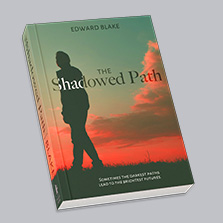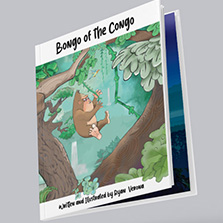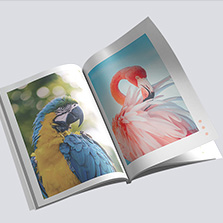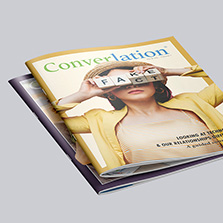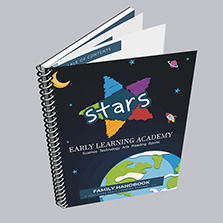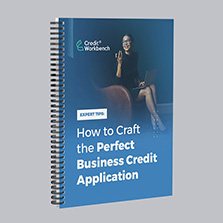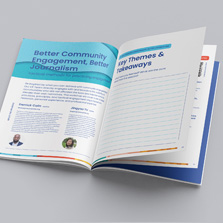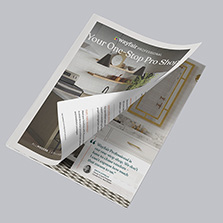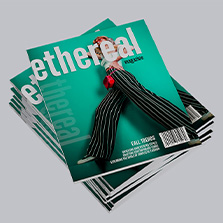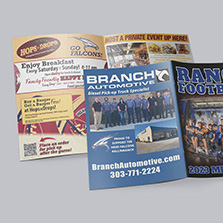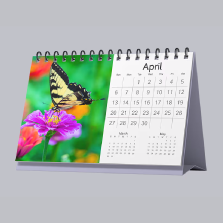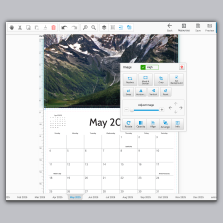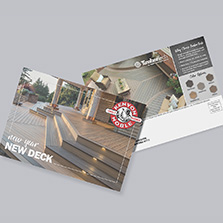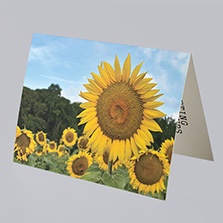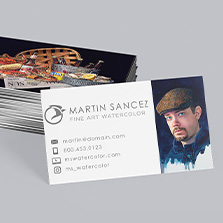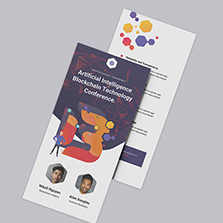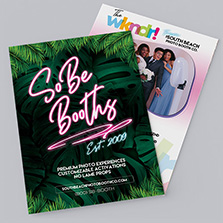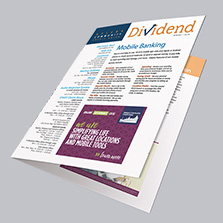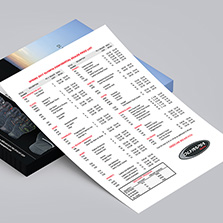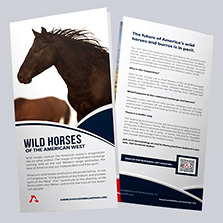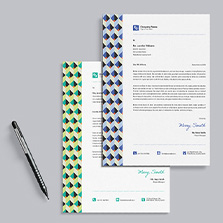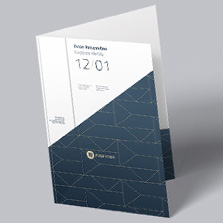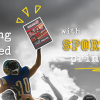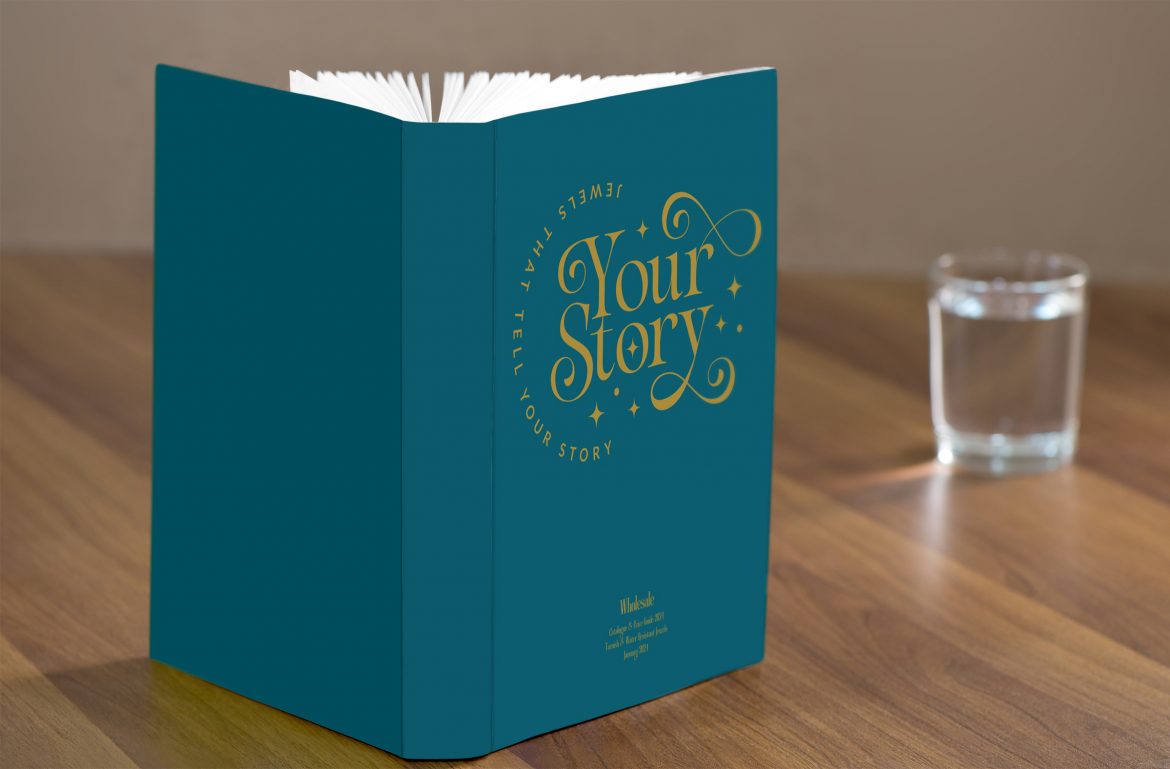
How Do I Self Print and Publish a Book?
Publishing a book is a dream shared by millions of soon-to-be-published authors worldwide. Whether your passion is storytelling, education, or advancing your brand’s visibility, learning how to self publish a book can help you realize your personal dreams and professional goals. Take the leap and self print and publish a book!
In recent years, more writers and content creators have become interested in how to self publish a book and make money. Unlike publishing your book with a traditional publisher, self-publishing offers you more creative control, higher royalties, and a faster publishing process. You can also choose whether to print physical copies of your book or publish an eBook.
Whether you dream of publishing your poetry or providing valuable resources to your customers—or anything in between—this article will help you organize your thoughts and create a step-by-step plan for self-publishing a book you can be proud of.
Step 1: Preparing Your Manuscript to Self Print and Publish a Book
Writing your book and preparing your manuscript to publish are the most time-intensive aspects of the publishing process.
Once you have the copy and content written for your book, it’s important to polish it before publishing. If you take the extra time to edit and properly format your manuscript, you will be happier with the final product.

In this step, we’ll discuss editing, formatting, and obtaining an ISBN and copyright for your book. Your book!
Developmental Editing
Your book’s structure, content, and storytelling will influence its impact on readers—and whether they tell all of their friends to buy a copy.
From strengthening the plot to selecting relevant anecdotes or making sure your manuscript is clear, developmental editing has many benefits.
Copy Editing
In addition to editing for structure and cohesiveness, it’s also important to focus on copy editing, which focuses on correcting grammar, spelling, punctuation, and syntax errors.
You certainly don’t want to skip this step when publishing a book because spelling and grammar are essential for establishing your credibility—and publishing something people enjoy reading.
Line Editing
Like copy editing, line editing can improve your work’s flow, rhythm, and clarity. Language style, word choice, and clarity are the main focal points within line editing. The goal here is to ensure that what you have written is error-free and resonates emotionally and intellectually with your audience.
Proofreading
Proofreading is the final review to catch any errors that may have been overlooked in the previous developmental, copy, and line editing stages.
Formatting: eBooks vs. print
A book’s formatting varies depending on whether you plan to publish it as an ebook or print.
Thankfully, there are software tools that can help make this process much more manageable, including:
- Microsoft Word: a popular choice due to its familiarity, extensive formatting options, and compatibility with various file formats
- Scrivener: novel, memoir, and non-fiction book writers like Scrivener because of its organizational features, flexible structure, and ability to export manuscripts to multiple formats
- Adobe InDesign: professional designers and publishers like Adobe InDesign because it supports high-quality graphics and offers advanced typography & superior layout tools
- Vellum: if you’re a Mac user, Vellum offers professional templates and an intuitive interface for designing perfectly formatted books for platforms like Kindle and Apple Books
- Calibre: authors and publishers enjoy the ease that Calibre offers for formatting and distributing ebooks, even converting from one ebook format to another
- KindleCreate: authors who publish ebooks on the Kindle platform using KindleCreate enjoy guided formatting features and templates
- PressBooks: whether you want to self publish an ebook or a printed version, PressBooks is user-friendly, offering customizable templates and publishing tools to create perfectly professional books to sell through online retailers

ISBN and Copyright
How can you obtain an ISBN and copyright for your book, and do you need to do these things before publishing your book?
If you want to distribute your book widely, obtaining an ISBN (International Standard Book Number) is a good idea because it will be easier for libraries, retailers, and wholesalers to find.
Once you’ve written a book, you can register your copyright with the U.S. Copyright Office for more peace of mind and legal benefits.
Step 2: Choosing the Right Self-Publishing Platform
Once you’ve prepared your manuscript, or maybe even while you’re still in the process, it’s time to consider the next step in publishing a book: choosing a self-publishing platform and deciding whether to use a print-on-demand service or bulk printing.
Print on Demand vs. Bulk Printing: Pros and Cons
Print-on-demand publishing means that you simply print copies as needed rather than having a whole bunch of books printed before you know you need them. Print-on-demand publishing services typically use digital printing technology.
The pros of using print-on-demand services for publishing and distributing your book include:
- It’s more cost-effective to print fewer copies or pay for prints as you need them, especially for individuals or small businesses
- Print-on-demand offers more flexibility for people who want to choose how many books to print at a time, even if they only want to print one. In fact, it can be ideal for individuals who only want to print a small number of books.
- Platforms that offer print-on-demand (POD) publishing often provide tools to help authors, publishers, and small businesses (like you!) upload and manage their content.
While printing on demand may sound like the path you want to take, it’s also important to consider the cons, which include:
- Higher costs per unit since the cost to print includes printing and shipping fees; this makes print on demand publishing less economical for large orders
- You will likely have less control over the quality of your finished book with print-on-demand; since each book is printed individually, they may vary slightly in appearance
Bulk printing and distribution, on the other hand, usually involves printing many books at once, usually using offset printing presses. Many writers and businesses who are working on high-volume projects prefer bulk printing.
Here are a few of the pros of bulk printing:
- Printing more copies at a time can be cost-efficient if you know you will need them all. The more books you print, the lower the price per book. So, if you know you will need a lot, then bulk printing books is an excellent option.
- Bulk printing services have faster turnaround times, especially for more copies
- Consistent quality can be achieved more easily with bulk printing services
The cons of bulk printing are:
- Bulk printing requires an upfront investment, which can make it difficult for small businesses or individuals with smaller budgets to utilize this option
- There’s always a risk of overprinting and ending up with way too many books!
- Bulk printing offers fewer customization options because it’s time-consuming to make necessary changes
Popular Self Publishing Platforms
As an author, you want to partner with a self publishing platform that gives you that sense of control over your book. After all, publishing a book is a really big deal, and you want to feel like your voice, preferences, and timeline matter in the process.
These self-publishing platforms have become increasingly popular for authors and business owners who want to learn how to Self print and publish a book to make money:
- AmazonKDP: Kindle Direct Publishing is one of the most popular services because it allows you to self-publish print or digital books and easily distribute them to reach millions of readers via Amazon’s platform.
- IngramSpark: IngramSpark specializes in helping you print hardcover, paperback, and ebook versions of your book, and they also help with global book distribution. They also offer a library of self-publishing tools to help customers learn how to self publish a book (and make money doing it)!
- Lulu: Lulu offers print-on-demand services to people who want to publish a book and sell it without worrying about maintaining an inventory and fulfilling orders themselves. Print-on-demand and direct-to-consumer selling are a couple of the things authors love most about Lulu.
When choosing a self-publishing platform, it helps to have a clear idea of your main goals for publishing a book.
Are you publishing a book to earn money, for brand awareness, or because it’s always been a dream in your heart?
Would you like to publish an ebook, a print book, or both?
What is your budget for publishing, and how can you ensure that you receive a top-quality product within your budget?

Many people wonder how to publish a book for free, and thanks to platforms like KDP and Lulu, it’s actually possible to do so without any upfront costs.
Of course, whether you want to print one copy or a thousand, you can also self publish a book using the top-of-the-line book printing services at Printing Center USA.
Costs and Royalties
While we’re on the subject of publishing a book for free, let’s take a moment to discuss the costs associated with publishing, as well as the royalty rate, retail price, and distribution costs, which may be deducted by popular book publishing platforms.
Pro tip: Even when you publish a book for free, there may still be additional costs associated with publishing and distribution, so always make sure you’re on the same page with your publisher regarding these fees.
Here are the costs and royalties you can expect from KDP, IngramSpark, and Lulu.
AmazonKDP Costs & Royalties: The world of paperback book printing costs and paperback book royalties from Amazon can be confusing at first, but Amazon offers a helpful explanation and calculator to help you get an idea of the costs of printing and publishing a book through Kindle Direct Publishing.
Then, they subtract the publishing costs from your royalties, which makes it possible for you to self publish a book and make money. The royalty for a paperback book sold through Amazon depends on the publishing costs and which distribution outlets you choose.
IngramSpark Costs & Royalties: One of the great values that IngramSpark offers to people who are publishing a book is global book distribution through their many distribution channels. You can publish a book with IngramSpark for free, but printing and distribution costs will be subtracted from your royalties.
They offer a calculator to help you discover how much you can expect to earn in royalties on your print book titles published with IngramSpark and sold through their distribution channels.
Lulu Costs & Royalties: The cost of printing and distributing a book varies based on the type of book binding, print color, type of paper, and many other important details. So, when publishing a book, it’s important to remember that each of these decisions will impact the quality of your product and how much you can earn from it.
Lulu also offers a calculator to help determine how much money you can make if you self publish on Lulu and sell your book through their channels.
One of the benefits of working with a bulk printing company like PrintingCenterUSA is that you can potentially earn more money from each book in the long run, and you have more control over the process and cost of marketing and distributing your book.
Step 3: Designing Your Book Cover
It feels like people have been saying don’t judge a book by its cover forever, but we all know we do exactly that. That’s why the cover design of your book is essential. It offers a first impression and will be front and center when you market it.

The cover of your book gives it a whole personality. Here are a few tips for designing a cover that will make potential readers want to hear what you have to say within the beautiful covers of your book.
DIY Book Cover Design Tips
- Search for book cover design inspiration on websites like Dribbble or Pinterest. You can save ideas you love on either! Create a mood board and begin to envision your book’s personality.
- Consider the genre and themes as further inspiration
- Make the title stand out (even on a thumbnail) by choosing a font and color palette that complement each other.
- Make it simple. Create a focal point, and leave plenty of empty space around that point.
- Utilize design tools like Canva or Adobe Express, formerly Adobe Spark.
Hiring a Designer
Even though there are lots of great design tips and tools out there, sometimes, hiring a designer makes the most sense, especially if you aren’t super design-savvy or don’t have time to do the design work.
It’s okay to take something off your plate and leave it to someone who enjoys it. You can focus on writing, marketing, or whatever brings you joy while allowing someone who enjoys designing to take care of that piece of the puzzle for you.
We recommend these graphic designers to help aspiring self publishers (like you!) design book covers and more.
Step 4: Printing Your Book
Once you have the cover designed, the manuscript polished, and the publishing platform chosen, it’s time to choose a printer. This is our favorite part!
Choose a Printer
Publishing a book can’t happen without the book, so you need to find a printer you can trust to help make your vision come to life. Here are a few factors to consider when choosing a printer:
- Cost: Compare the costs of various printers and look carefully to figure out how much it costs to print a book.
- Quality: Read reviews to ensure that you choose a quality printer that will meet–if not exceed–your printing standards.
- Location: Your printer’s location can impact the shipping costs and delivery time for your book. If you want to meet IRL with your printer or have a hands-on role in the publishing process, you may want to choose a geographically close printer.
Print Specifications
Again, the print specifications for your book will impact its price and printing cost, which can ultimately affect how much you get paid. Think carefully about which type of paper, binding, and cover finish will be best for your book–and your budget.

We already have resources available to help you make each of these choices:
- This article will help you decide which type of book binding to choose when publishing a book,
- How to choose whether you’d like your book to be published as a hardback or paperback book,
- And, of course, how to choose the right paper for your book!
Many of these decisions are ultimately a matter of your personal preference and what your budget will allow. However, working with a knowledgeable printer can be a lifesaver when you’re having a tough time making these important book publishing decisions.
Proof Copies
Before printing, you should definitely order a proof copy to double-check that your book is error-free and meets your expectations.
Sometimes, it’s easier to recognize errors or printing problems in a physical copy. There’s just something about holding a copy in your hands! Of your own book!
Sure, you have to purchase an extra copy up-front, but catching the error before the final printing can save you more in the long run.
Step 5: Marketing and Distribution
Different publishing and distribution platforms require different levels of commitment from you during the marketing and distribution processes. However, if you want to self-publish a book and make money doing it, you’ll have to market your project. Here are some ideas and strategies to help you build a platform, pre-launch, launch, and distribute your book.
Building an Author Platform
Building an author platform means engaging with your audience and establishing credibility and rapport with them so they will want to buy your book once it’s published. There are many ways to build your author platform. They include:
- Creating an author website to share your brand, bio, upcoming events, and contact info.
- Engaging on social media platforms like TikTok, Facebook, X (Twitter), LinkedIn, or Instagram. There are many “Bookstagrammers” who would love to help spread the word.
- Blogging and building an e-mail list can help you stay connected to your audience before, during, and after your book launch.
- Networking with other authors, bloggers, and other professionals. There are endless collaborations and audiences you have yet to meet!
Pre-Launch Strategies
The pre-launch is all about laying the groundwork for a successful book launch. Using your platform, you can build anticipation for your new release by sharing photos of the cover, your writing or editing process, and connecting with your potential audience on a human level.
Depending on how you choose to build your platform, you can share teasers on various social media platforms, send pre-release copies of your book to book bloggers or Instagrammers to review (early reviews will help you so much!) and share with their audiences. You can also post links for your fans to pre-order your book.
Create a content strategy and optimize your book’s metadata to ensure that search engines and retailers can find it. Staying organized and having a plan in place will help you move smoothly from pre-launch to launching your new book.
Launch Strategies
There are many fun ways to launch your new book!
- A virtual launch party on Facebook Live, Instagram Live, or Zoom – you could host a live reading, Q+A Sesh, or book giveaway.
- Reach out to book clubs and offer exclusive content if they feature your book in the next few months.

- Ask a local bookstore to host an in-person book launch event with you!
- Pitch yourself as a podcast guest on podcasts with audiences the same as your target demographic.
- Collaborate with other writers, business owners, or brands who are also releasing books or products. You can help each other with promotion!
- Engage with your community through book readings, literacy events, and visits to schools or libraries.
There are so many fun ways to promote your new book!
So, if you have been wondering if it’s possible to self-publish and print a book, it is! We have helped thousands of individuals and businesses publish their books. We can help you start the process today and move one step closer to inspiring, educating, and captivating your audience.


